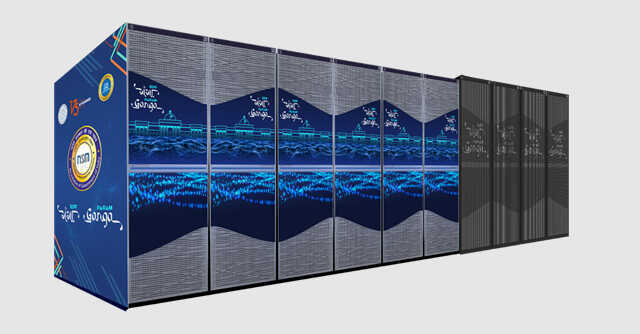
IIT Roorkee gets new petascale supercomputer PARAM Ganga


The government’s National Supercomputer Mission (NSM) has deployed a supercomputer system with 1.66 petaFLOPS (PFLOPS) of computing power at the Indian Institute of Technology (IIT), Roorkee.
Designed, developed, and commissioned by the Centre for Development of Advanced Computing (C-DAC), the supercomputer called PARAM-Ganga has components manufactured and assembled in India, the Ministry of Electronics and Information Technology (MeitY), said in a statement on Tuesday. The software stack used in the system has been developed by C-DAC.
NSM is a joint mission of MeitY and the Department of Science and Technology (DST), which aims to deploy 24 facilities with a combined computing power of more than 64 petaFLOPS. The computing power of supercomputers is measured in floating-point operations per second or FLOPS. One petaFLOP is equal to 1,000,000,000,000,000 (one quadrillion) FLOPS, or one thousand teraFLOPS.

Modern-day research requires heavy simulations, which require a lot of computing power. As of now, C-DAC has deployed 11 such systems at Indian Institute of Science (IISCs), IITs, Indian Institute of Science Education and Research (IISER) in Pune, the Jawaharlal Nehru Centre for Advanced Scientific Research (JNCASR), and the National Agri-Food Biotechnology Institute (NABI) in Mohali. These have a cumulative power of 20 Petaflops.
Researchers have completed 3.6 million computational tasks with these systems, the ministry claimed. In addition to developing and deploying individual supercomputers, the C-DAC has also developed a compute server named Rudra and a high-speed interconnect called Trinetra, which connects the supercomputers.
Supercomputers and Quantum computers can accelerate research by several years by providing millions of times more computing power than an ordinary computer. When the covid-19 pandemic started, medical researchers across the world turned to supercomputers to study the structure of virus proteins.

According to MeitY, the new supercomputer will accelerate the research and development activities across various domains of science and engineering with a focus to provide computational power to the user community of IIT Roorkee and other academic institutions in its vicinity.
However, India has a long way to go, even with combined computing speeds of 64petaFLOPS. The world's fastest supercomputer, Fugaku, which is located at RIKEN Center for Computational Science in Kobe, Japan, has a computing speed of 415.5 petaFLOPS.
India currently has three supercomputers in the Top500 list of most powerful supercomputers in the world. The C-DAC’s PARAM-Siddhi, which was developed by the NSM and delivers 6.5 petaflops of power, was inducted into the list in 2020. It ranks 102, while the Indian Institute of Tropical Meteorology’s supercomputer, called Pratyush, is ranked 121.

The National Centre for Medium Range Weather Forecasting’s Mihir supercomputer is 228th on the list. Pratyush and Mihir are both used for weather forecasting and for studying climate change.
While PARAM-Ganga hasn’t been inducted into the list yet, there are 56 supercomputers on the list that provide less than 1.66 petaFLOPS of power.
